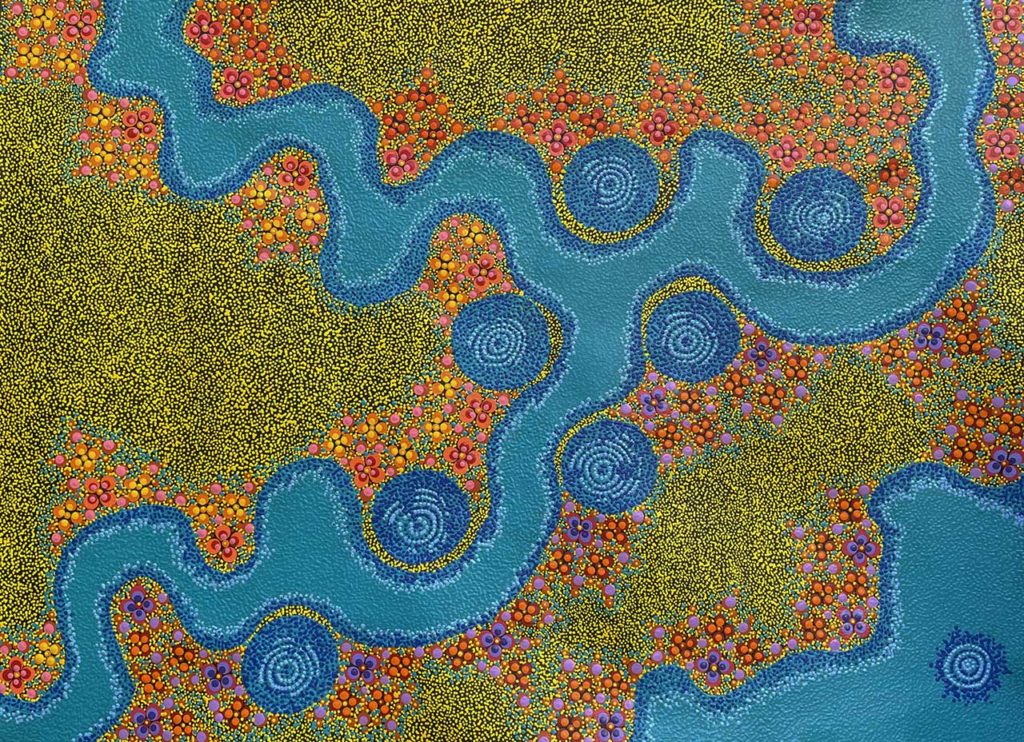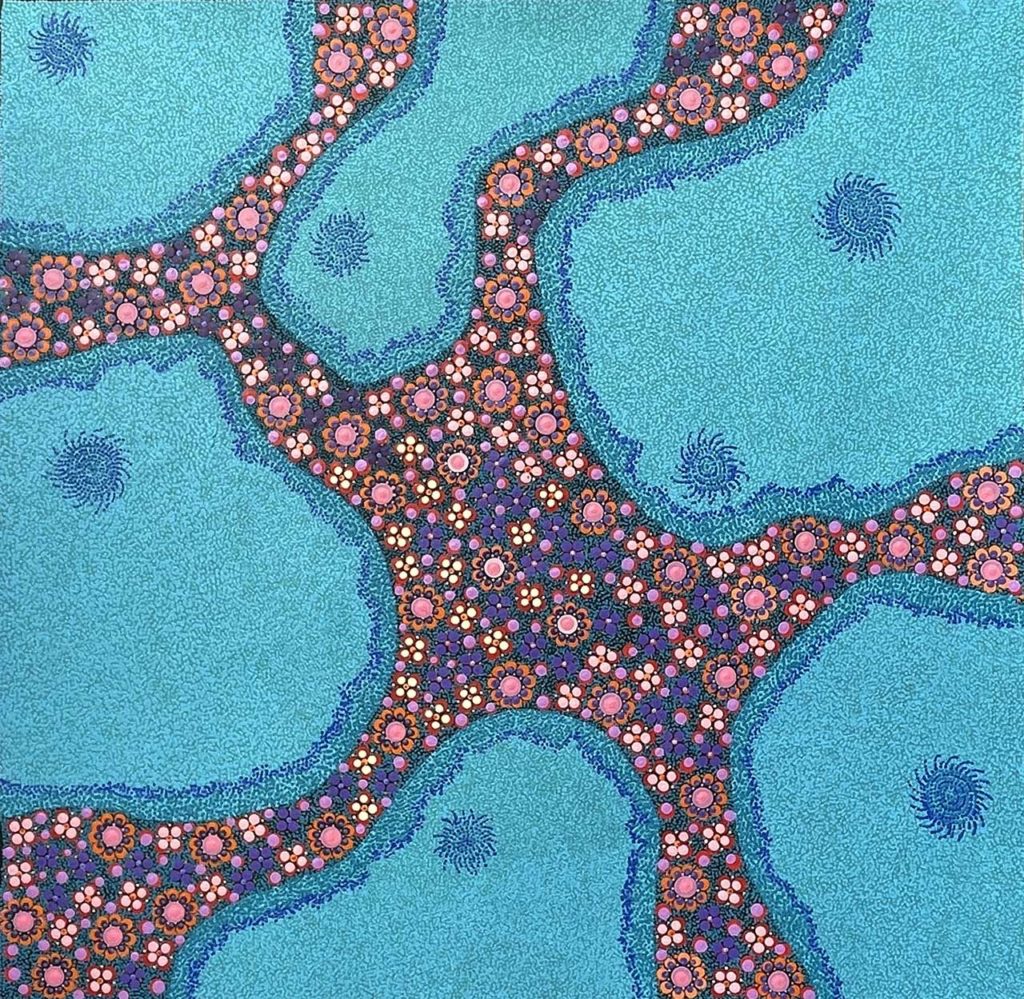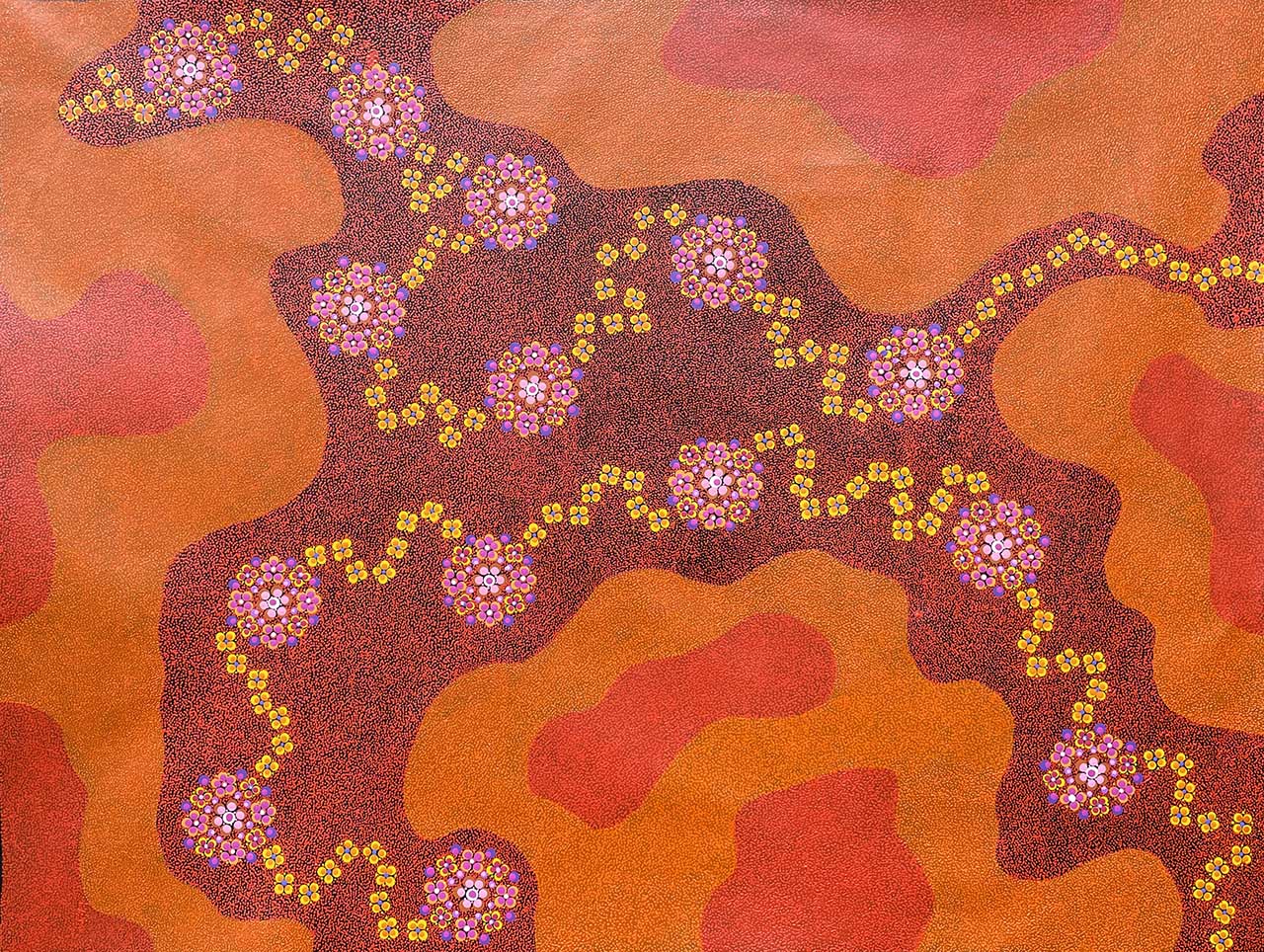Featuring Andrew Tjupurrula Highford
This Is My Culture, and This Is Who I Am
In this interview, artist Andrew Tjupurrula Highfold talks about how he came to piece together his lost family ties and reclaim his connection to country and culture.
I'm not a Western Australian. I'm from South Australia, and I'm part of the stolen generation. I grew up in a non-Aboriginal family. I didn't know much about my culture and my Aboriginality until later on. That'd be when I was about 19 or 20. Then I found cousins who helped me because I had no idea who my mum was or anything about that side of my family. I never knew.
This all happened just before I got married, and I reckon I was about 22. We then went looking a bit more for the family. I connected strongly with cousins that I knew in Adelaide. Then I slowly met birth brothers and sisters who also lived in Adelaide. By this time, my mum had passed away about a year. I didn't know it at the time, but as I was looking into my Aboriginality, she passed away of cancer. She was born at a Koonibba mission, over near Ceduna, in South Australia. My grandparents came from there, as well. So that was where I started to look more into my family.
Top Image: Andrew Tjupurrula Highfold | Dry Desert Creek Beds | Jap 018044

Once I knew all the family, we are the Highfolds. The Highfolds are all over the west coast in South Australia, from Ceduna way up to the old Koonibba mission, which is about an hour out of Ceduna towards the West Australian border. Then you've got Yalata. Then if you head inland from Yalata and you go through South Australia, you end up at the APY Lands. We've got traditional family connections up that way.
Unfortunately, I found a lot of this later in life. I didn't meet my two brothers, who lived most of their life in Alice Springs for 40 years. That was a long gap, but they welcomed me into the family. We worked through it.
My artwork didn't bloom until about seven years ago. I discovered that I could paint. I found this out when we lived in Alice Springs through my sisters-in-law. They're both painters in their own lives. That worked out pretty well. My brothers didn't know anything about painting, but my sisters-in-law taught me. After a few hiccups, I started to paint a bit and was attached to a gallery in Melbourne. I used to sell a lot of my work there.

Then we've moved here to Western Australia. As it's turned out, I'm now selling my artwork through Japingka. It's been really great for me because I can paint on a bigger canvas, and I'm actually developing myself. Even though I'm in my sixties, I'm still developing my style, as they say. I like doing country. I like doing the dry or the wet season or a combination. The fine dot work was how I learned from my sister-in-law because she did little fine dots, and she taught me. I sit there, and I use a very small stick. That's what I come up with.
I'm not an Aboriginal who has a Storyline, but I've been taught how to do country. I think that's important for me. My children are now adults and I've got grandkids as well and it's good for them because they can see that, wow, Dad/Grandad can do the painting. I express who I am and my culture through my paintings.

